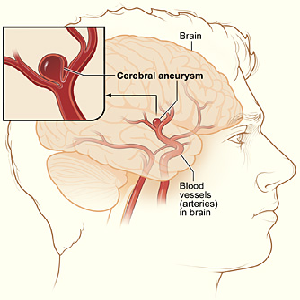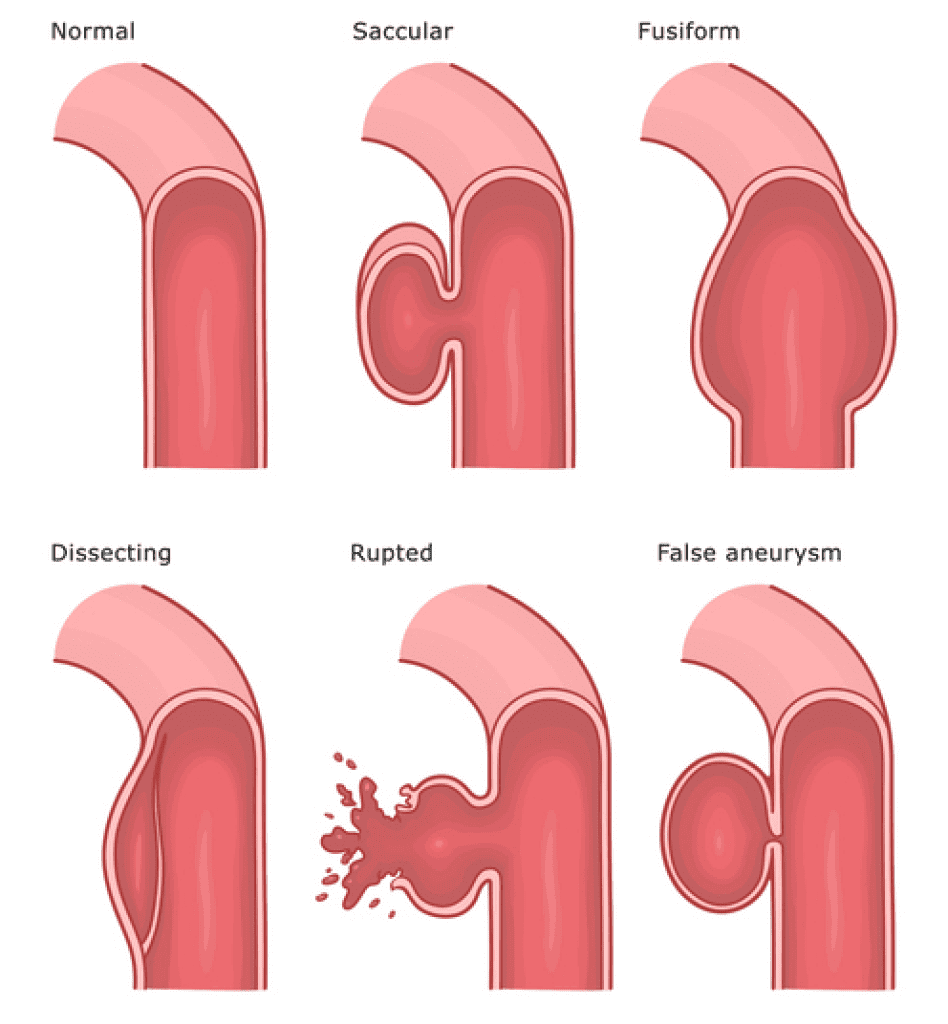Let’s be honest—aneurysms are terrifying. They’re called “silent killers” because they often develop without any symptoms and can strike when you least expect it. But here’s the empowering part: if you know what to watch for, you could quite literally save your life or someone else’s.
A brain aneurysm is a bulging blood vessel in the brain. While many remain harmless, others can rupture and cause life-threatening bleeding in the brain, known as a hemorrhagic stroke. The key? Spot the symptoms early.
What Is an Aneurysm?

An aneurysm is a balloon-like bulge in a blood vessel. In the brain, this can be particularly dangerous because a rupture leads to bleeding that compresses and damages brain tissue. Not all aneurysms rupture, but when they do, they become medical emergencies. Recognizing the warning signs before it happens is crucial.
Symptoms of a Ruptured Aneurysm
Here are the most common and urgent signs to look for when a brain aneurysm has ruptured:
1. Sudden and Severe Headache
Often described as the worst headache of one’s life, it comes on abruptly, without warning, and is intense and painful.
2. Blurred or Double Vision
A rupture can impact the nerves controlling your eyes, leading to visual disturbances.
3. Confusion
A sudden inability to think clearly, disorientation, or trouble processing thoughts can occur due to pressure on the brain.
4. One Dilated Pupil
A significantly larger pupil in one eye may signal increased pressure or damage from a bleed.
5. One Drooping Eyelid
Drooping of one eyelid often suggests the aneurysm is pressing against cranial nerves.
6. Fainting or Loss of Consciousness
A rupture can instantly reduce blood flow to the brain, causing unconsciousness.
Video : How do you know if you’re experiencing an aneurysm? 🧐🧠
7. Nausea and Vomiting
The brain responds to trauma by triggering nausea, a common symptom of ruptures.
8. Pain Around One Eye
Localized pain near or behind the eye may indicate pressure from an aneurysm about to burst.
9. Stiff Neck
Blood leakage into spinal fluid can irritate tissues around the brain and spine, causing stiffness.
10. Sensitivity to Light
Photophobia is a common sign when the brain’s lining is inflamed due to a bleed.
11. Seizures
Uncontrolled electrical activity in the brain can lead to seizures, especially in people without a seizure history.
12. Weakness or Numbness
Sudden numbness in the face, arms, or legs may signal impaired blood flow due to a rupture.
The Danger of a Leaking Aneurysm
Some aneurysms don’t rupture all at once. Instead, they begin with a slow, small bleed over days or weeks. This is called a sentinel bleed. The biggest clue is a painful, sudden headache that doesn’t go away. It may linger, pulse, or return repeatedly. If this happens, don’t wait—go to the emergency room. Catching it before it fully ruptures can save your life.
What About Unruptured Aneurysms?

Most aneurysms don’t cause any symptoms and are only found by chance during brain imaging. But if they grow large enough, they can press on nerves or other tissues and cause warning signs like:
Blurred or double vision
Pain around or behind one eye
A drooping eyelid
One dilated pupil
Facial weakness or numbness
Changes in your usual headache patterns
While these signs might not scream emergency, they still require medical attention. Better safe than sorry.
Who Is Most at Risk?
Some people are more prone to brain aneurysms than others. If you fall into any of these categories, it’s important to stay alert:
Women, especially those over 40
Anyone with a family history of aneurysms
People with high blood pressure
Smokers or heavy drinkers
Individuals with certain genetic conditions, such as Marfan syndrome, polycystic kidney disease, or vascular Ehlers-Danlos syndrome
Additionally, people with arteriovenous malformations or fibromuscular dysplasia may face increased risk.
What Happens During a Rupture?

When an aneurysm ruptures, blood floods into the space around the brain. Even a small amount of bleeding can cause serious problems. Pressure builds up in the skull, which can block oxygen to the brain, damage tissue, and lead to unconsciousness or death within minutes.
Complications After a Rupture
Surviving a rupture is just the beginning. Patients may face severe complications such as:
Re-bleeding from the same aneurysm
Vasospasm—where nearby vessels constrict, reducing blood flow and causing strokes
Hydrocephalus—a buildup of spinal fluid in the brain that increases pressure and damages tissues
Immediate and ongoing care is essential to recovery.
Prevention and Lifestyle Changes
While you can’t change your genes, you can reduce your risk. Here’s how:
Stop smoking. It damages and weakens blood vessels.
Lower your blood pressure with a heart-healthy diet and regular exercise.
Limit alcohol and caffeine.
Eat more fruits, vegetables, and whole grains.
Get regular checkups, especially if you have a family history.
Healthy living helps protect your brain—not just from aneurysms, but from stroke, dementia, and heart disease too.
Video : 5 Heart Attack Warning Signs You Shouldn’t Ignore! Dr. Mandell
Conclusion: Awareness Can Save Your Life
Brain aneurysms don’t always come with clear warning signs. But when they do, the signs are loud and urgent. If you or someone you love experiences a sudden, severe headache, changes in vision, or any of the other symptoms listed, don’t wait. Call emergency services right away.
Early action can mean the difference between full recovery and lifelong complications—or worse. The best defense against an aneurysm is a combination of vigilance, healthy habits, and quick response when symptoms appear. Don’t ignore the signs. Your brain is worth protecting.


